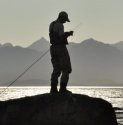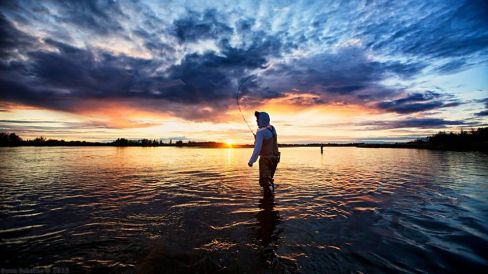Val Atkinson is well known for his photographic images that have appeared in many fly-fishing magazines and books since the 1970’s. Val caught his first trout on a fly rod at the age of seven. That hatchery fish from the Wissahickon Park in Philadelphia sparked a flame that still keeps him warm. Twenty years ago he started taking a camera on fishing trips after realizing that there was a lot more to angling than catching fish. Over the years he has learned to combine these two passions into his life's work. His four books fulfill a dream of enabling him to share these passions with us. He has now traveled to 40 countries on assignments and in recent years the challenge of making a really great image has started to transcend his desire to catch fish. However, fly fishing and photography go very well together. Val’s secret is knowing when to put down the rod and pick up the camera. These days he travels farther afield but it's the same quest for beauty and solitude that motivates him. It is his sincere desire that the images he shares with us transmit the passion for these wild and romantic places. If they do, then hopefully we will share the desire to cherish, respect and protect what wilderness remains in the world and actively resist the greed which flourishes and threatens, that our children and grandchildren will also see these places one day and find them as lovely as they appear here. It is our pleasure to share with you Val’s interview.
FD: When did you start fishing? Who was your mentor? Could you tell us about your memories from those times?
VA: I first started fishing the streams and ponds in Ohio when I was about 5 years old - with a stick, a bent pin and a worm. I have no idea where the desire came from as my parents and grandparents did not fish. They didn't even like to eat fish. It just seemed to be in my DNA. I would beg my dad to take me and he would hang around and read a book while I sat by the water's edge waiting for something to happen. It never did for many years. I have no idea what kept me going.This may sound slightly strange but it's absolutely true. As I got older I read books and taught myself fishing. I went from stick and pin to spinning and then fly fishing when I was about 14. I can still remember the excitement of my very first trout on a fly called the Yellow Sally and a St Croix fiberglass rod. What a lasting memory.
 FD: Which are your favorite salt and freshwater species? Why?
FD: Which are your favorite salt and freshwater species? Why?VA: My favorite species of fish would be Brown trout and Bonefish. I very much enjoy sight casting to my quarry. I love the mountains and the sand flats. However, having said that, I do enjoy all types of fish. If it swims I'll fish for it.
FD: When did you become a professional photographer? How?
VA: I became a professional photographer after studying art and photography at The Columbus College of Art & Design in Ohio. I studied design and light and painting for six long years and graduated with a BFA degree. That was in 1968. Then I moved to California to ply my trade after graduation. When you grow up in the mid west – California, is where you move to for anything creative. It also had the beaches, cars and pretty girls which were also important in those days. At first I dabbled around trying to find my niche - shooting architecture, babies, cars, nudes, portraits. One day I went with some friends to Hat Creek in Northern California on a camping and fishing trip documenting our adventure in black and white film. Sending the results to Fly fisherman magazine they bought the whole lot and wrote me a check for $500. Bingo, I had discovered my new calling - a fly fishing photographer. I married the two things that I loved into one livelihood. Those were great days.
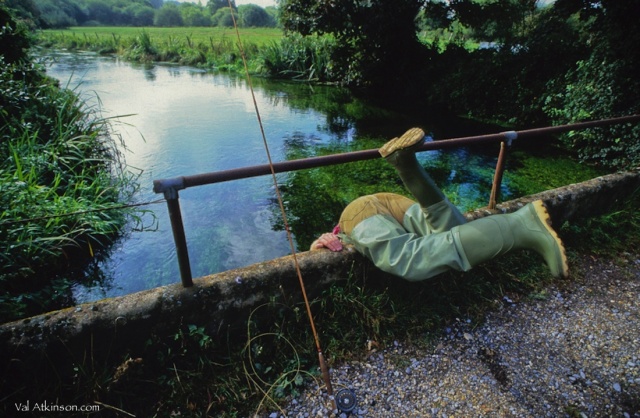 FD: Photography is one of your passions, along with fly fishing. How do you handle both at the same time when you are outdoors?
FD: Photography is one of your passions, along with fly fishing. How do you handle both at the same time when you are outdoors? VA: Enjoying both fly fishing and photography is a real challenge. I like to say that I'm a photographer who likes to fish not the other way around.Starting out early in the morning I look for beautiful and dramatic light. Then as the sun creeps higher in the sky the light becomes flat and not so interesting. Perhaps the warmer temperature will bring about a hatch and fish start to rise so I put my camera in my backpack and take out the rod. Timing is everything. Great photography is all about light. The famous mountaineering photographer Galen Rowel used to say "Find good light and photograph something in it”. Still to this day it's a challenge to do the right thing at the right time. On a recent assignment to Kamchatka I was trying to do both and quickly realized that in order to get good images because of the tough conditions I was going to have to forgo the fishing which I did. I had to live vicariously through my models. Appreciating their enjoyment through my lens. It was tough but I did get some stunning images. (Visit http://www.ValAtkinsonPhotos.smugmug.com for images of Kamchatka and others places.)
FD: What is your favorite camera system? Which are your favorite lenses?
VA: I currently use Nikon equipment. I think Nikon and Canon are the leaders in the professional field; however, I try not to become an equipment junkie. A great image is more about being creative and less about having the latest gear. My motto has always been "less is more". I travel with 2 camera bodies (D700) and about 4 lenses. Sweet and simple.
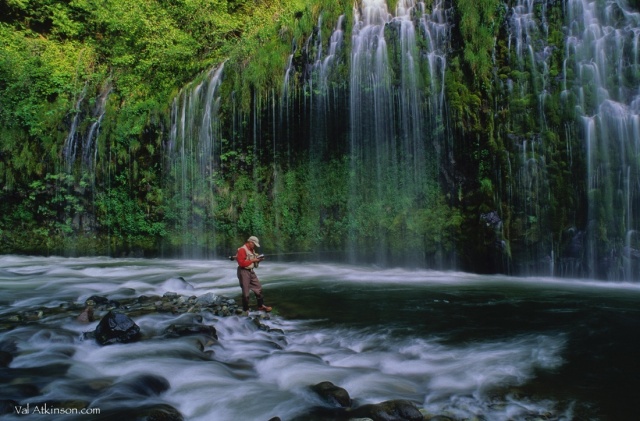 FD: What do you think about the new era in photography (Digital cameras, software)?
FD: What do you think about the new era in photography (Digital cameras, software)?VA: The world of creative photography has spiked off the page, so to speak, with the advent of good affordable digital cameras and software that everyone can afford and have fun with. Somewhere in the world someone is capturing a never before seen image with a small high quality camera. A person who is in the right place at the right time. It's challenging for professional photographers these days to make a good living with so many shooters out there. Even the amateurs are good. In the old days I had maybe a half dozen competitors in the whole country calling themselves fly fishing photographers. Now there are dozens if not hundreds.But I am proud to say I've made my whole livelihood for the last 35 years selling fly fishing images. Have even published 4 books (see them listed on my web site).
FD: You have been travelling all over the world fishing for almost 40 years now. A) Which are your favorite fresh and saltwater spots? B) Could you tell us some remarkable memories from your trips?
VA: I've gone through 4 passports and 40 countries many of them many times over. It would be hard to choose just one or two. I've never meet a country or its inhabitants that I haven't enjoyed spending time fishing and photographing.
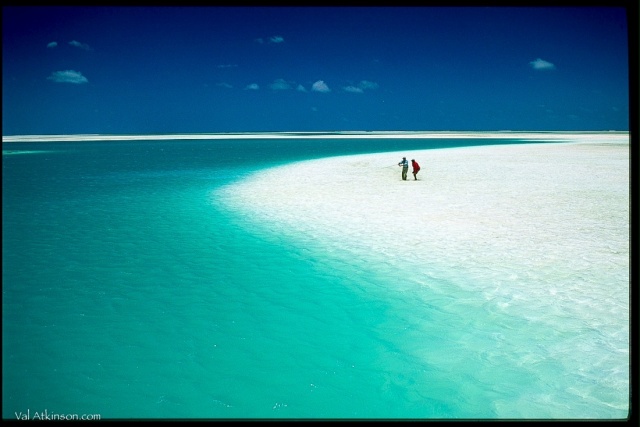 FD: Which spots and species are in your bucket list?
FD: Which spots and species are in your bucket list?VA: In my mature years now I've developed a taste for photographing and fishing the exotic and unusual. I want to go back to India and Nepal and catch a really nice Mahseer on a fly. I'd love to visit Mongolia and target Taimen and photograph the beautiful Mongolian people. And of course more sea trout from Tierra del Fuego. Though perhaps at the top of that list would be the most under rated gamefish in the world- the Golden Dorado of Bolivia and Argentina. I could go on and on.
FD: Do you consider important to know fly fishing history? Why?
VA: Do I consider fly fishing history to be important? That would be a vast understatement. My library in Fall River contains hard copy books that take up an entire room. A treasure collected from a lifetime of acquisition. I have large coffee table style books from all over the world and wonderful first edition copies from the famous authors of fly fishing history that are very dear to me.Ernie Schwiebert, Joe Brooks, the Hemingway’s, Ray Bergman, Edward R Hewitt, Roderick Haig Brown, Zane Gray just to name a very few. These guys have all passed on but there's much we can learn about our sport from these masters of the written word. They teach us that Nature and her creatures are part of a gentle and peaceful world. I would highly recommend reading an old book of fishing adventures from any one of these or many other great sporting writers.
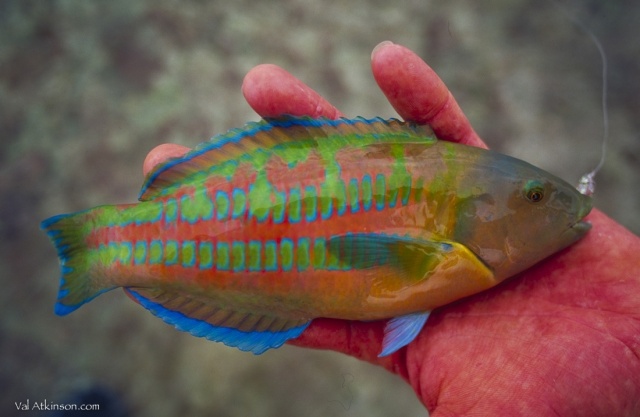 FD: What is fly fishing for you? How do you feel when you fly fish?
FD: What is fly fishing for you? How do you feel when you fly fish? VA: Fly fishing and photography are my great passions in life. They are my very reason for living. Some years ago I defined this sense of enjoyment in a poem: "Happiness for me is a lonely, dusty road in summer with a full tank of gas and a trunk full of fishing tackle. Escaping the crowds of the city for the wonderful solitude of the river and its inhabitants; to breathe crisp, clean air and to feel the sun on your back as you wade the river". I would add that trunk now holds my Nikons as well.
FD: What would you recommend to the starting photographer?
VA: To the starting photographer I would say venture out in the wonderful world of nature and go do it. Let your passions and creative juices take you where they may. God speed and good luck.
FD: We’d like to thank Val for his time and dedication. For more information about Val you may visit his sites: http://www.valAtkinsonPhotos.smugmug.com or http://www.valAtkinson.com

